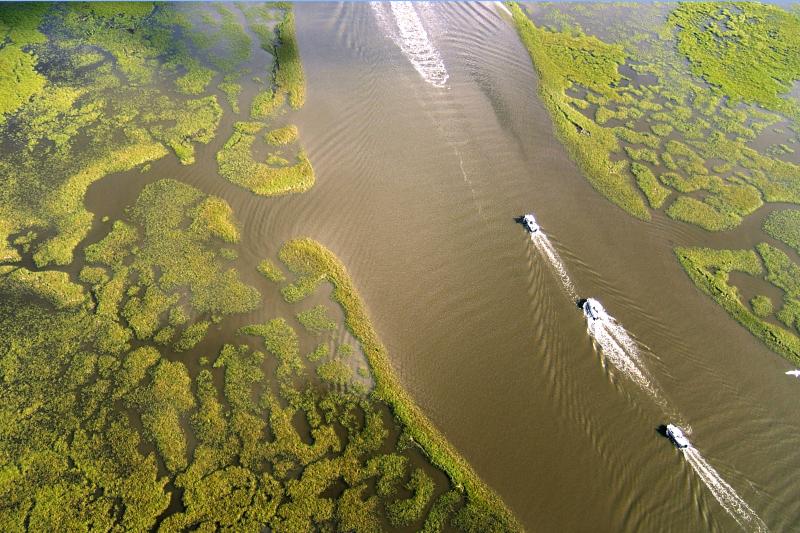NOAA Fisheries Office of Habitat Conservation is passionate about efforts that benefit marine resources and coastal communities. Habitat has been destroyed by coastal development, pollution, extreme weather, and other factors. We conserve habitat to sustain fisheries, recover threatened and endangered species, and support resilient coastal communities and ecosystems.
Healthy habitats support coastal communities’ fishing economies, clean water, and recreation, but stressors like pollution, development, and extreme weather threaten these habitats.
Within the Office of Habitat Conservation are two programs that address these issues. These programs were created to accomplish the goals of protecting, restoring, and maintaining habitat after oil spills and toxic waste releases. Read on to learn about just a few of the projects supported by the Damage Assessment, Remediation, and Restoration Program and Deepwater Horizon restoration program.
Upper Barataria Marsh Creation
WATCH: A special dredge on the Mississippi River carves sediment from a "take" area on the river bottom, then pumps it to the Upper Barataria marsh creation area 13 miles away.
NOAA’s largest wetland restoration project ever is almost done with construction and will have restored over 1,000 acres of wetlands upon its completion. During the 2010 Deepwater Horizon oil spill, the resulting coastal marsh degradation accelerated a severe land-loss trend threatening Louisiana’s estuaries. Using sediment dredged from the Mississippi River, five interconnected marsh areas will be created to provide a myriad of environmental benefits.
Learn more about this groundbreaking project here
New England Restoration Post Bouchard Barge 120 Oil Spill
Disaster struck Buzzards Bay along the coast of New England 20 years ago when a barge ran aground and released nearly 100,000 gallons of fuel oil along the Massachusetts and Rhode Island shorelines. The spill damaged many salt marshes and other coastal habitats, killed and injured shellfish, terns, loons, and other bird species, disrupted ecological processes, and closed local shellfishing and other daily public use of coastal resources within the spill area. Through the Damage Assessment, Remediation, and Restoration Program, NOAA and partners have worked over the last two decades to restore fish, wildlife and birds, and public uses impacted by the spill.
Deepwater Horizon: 13 Years Later
The Damage Assessment, Remediation, and Restoration Program’s most well-known case is undoubtedly the Deepwater Horizon oil spill in April of 2010. A drilling platform in the Gulf of Mexico exploded, killing 11 men and causing a catastrophic oil leak that released 134 million gallons of oil into the water. Through the cooperation and coordination of five states, four federal agencies, numerous partners, and thousands of deeply committed individuals, strong restoration progress continues in the Gulf of Mexico 13 years after the Deepwater Horizon oil spill. View a snapshot of the incredible restoration work so far that has been funded through $4 billion across more than 280 projects.
Sea Turtle Habitat Restoration in Florida
In April 2023, NOAA and partners completed acquisition of a 1.07-acre parcel and a 0.8-acre parcel in January 2023 in the Archie Carr Wildlife Refuge. These beachfront parcels, which were acquired from willing private property owners, will protect habitat for beach nesting sea turtles in eastern Florida. Many of the sea turtles that range throughout the Gulf of Mexico nest at the refuge, including loggerhead, green, and leatherback sea turtles. The refuge is home to the largest nesting population of loggerheads in the world and accounts for a quarter of all loggerhead sea turtle nests in the world






